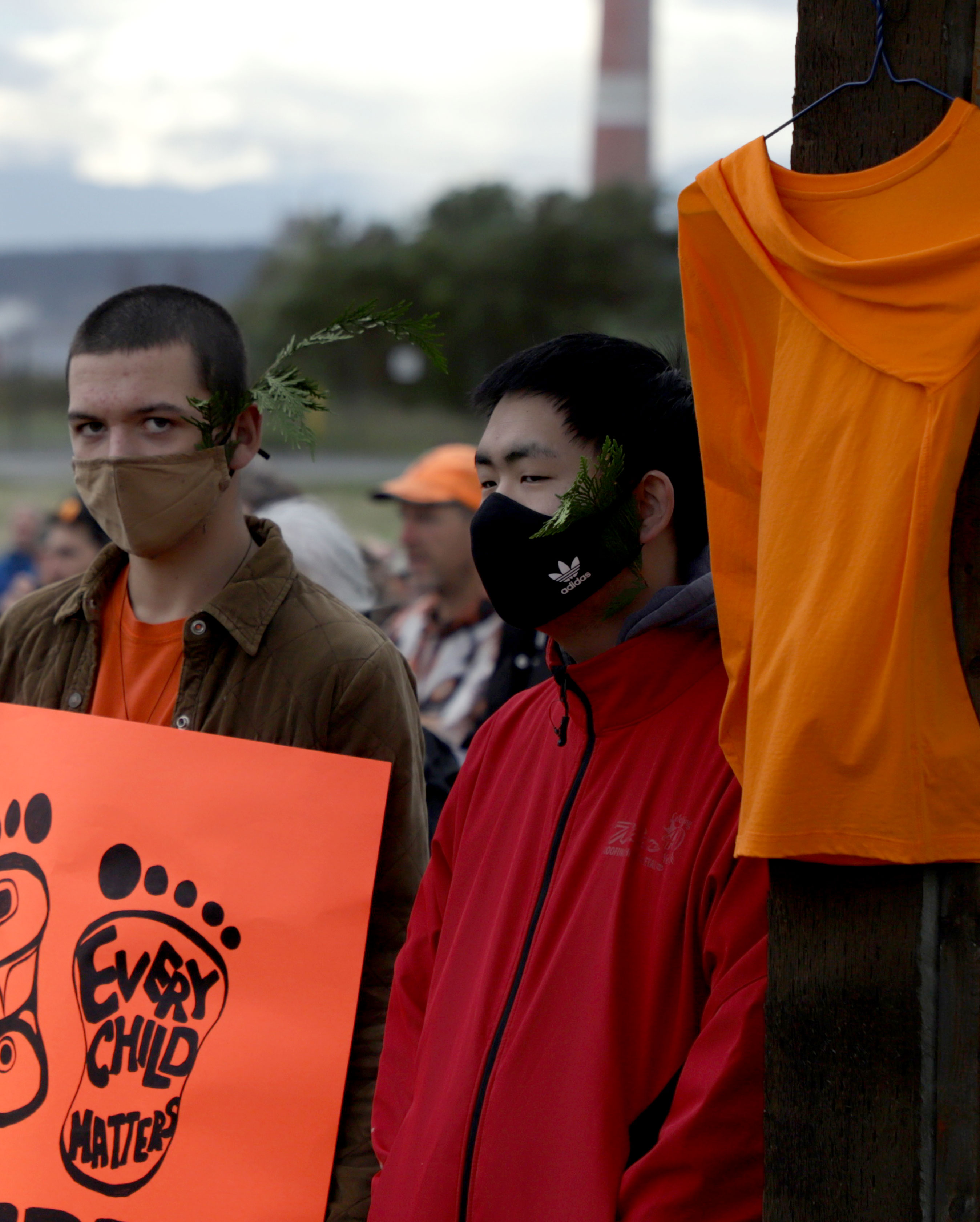By Abby Francis, Local Journalism Initiative reporter
I attended the Truth and Reconciliation Day march on September 30. I was photographing it for qathet Living, so a lot of my attention was focused on taking pictures, however, there were multiple moments where I would stop and look around and be filled with a thousand different emotions.
A couple days prior to the march, I drove past Willingdon Beach, and had seen the dozens of orange shirts on all of the trees. I was speechless. My first feeling was being quite surprised at how many shirts there were. Then I saw the banner with big numbers on it – numbers that I wish didn’t have to exist. The feeling I left with was like a stab in the heart.
That experience left me with painful thoughts; why would anyone ever think it is okay to do that? To take children away from their homes, separate families, and have children be treated like that? It makes me feel angry, frustrated, and confused.
Resources, land, racism, and money should never be the reasons to treat people, especially children, that badly. It’s so sickening to think that this was how things were back then, even now, in some places.
Relatives, neighbours, friends, and elders, every young First Nations person knows someone who had been affected by these schools. It is awful knowing that the people who we have so much respect for were disrespected and forced to unlearn the culture that so many of us cherish so deeply.
It is up to those young First Nations to relearn our culture and listen to the ones we know have been disrespected, so that we can one day be able to pass on our culture to the future generations.
On a lighter note, the number of people who participated in the Truth and Reconciliation Day march shocked me. I did not think the turn out would be that big (I estimate about 600 people marched). This left me with a couple different thoughts. For one I was overwhelmed, as I had not been around that many people in a couple years. I was also in awe because of the number of people who came and showed support. First Nations communities were hurt, and to this day those same communities continue to hurt. There will not ever be a way to fix that hurt, but there is a way to help it heal.
That is the overall feeling I had from the march. The feeling of not only my community but other First Nations across Canada being able to start healing too.
It is very difficult to heal alone though. Seeing people at the march from all over qathet really shows the connection Powell River and Tla’amin communities have. That, I believe, is something special. And is a big step towards reconciling.
It was an experience you really have to be there to fully understand. The extent of emotion a day like this brings is so powerful, meaningful, but also very sad.
After going through the hundreds of photos I had taken that day, my final thought was gratitude. This was Canada’s first Truth and Reconciliation Day, a new chapter in history, and I got to be at and take part in our region’s march, with photos I will now have throughout my whole lifetime.
I just wonder how Prime Minister Trudeau spent the day, seeing as it was a federal stat, and Parliament Hill was holding a ceremony to raise its flag in honour of these children?

















